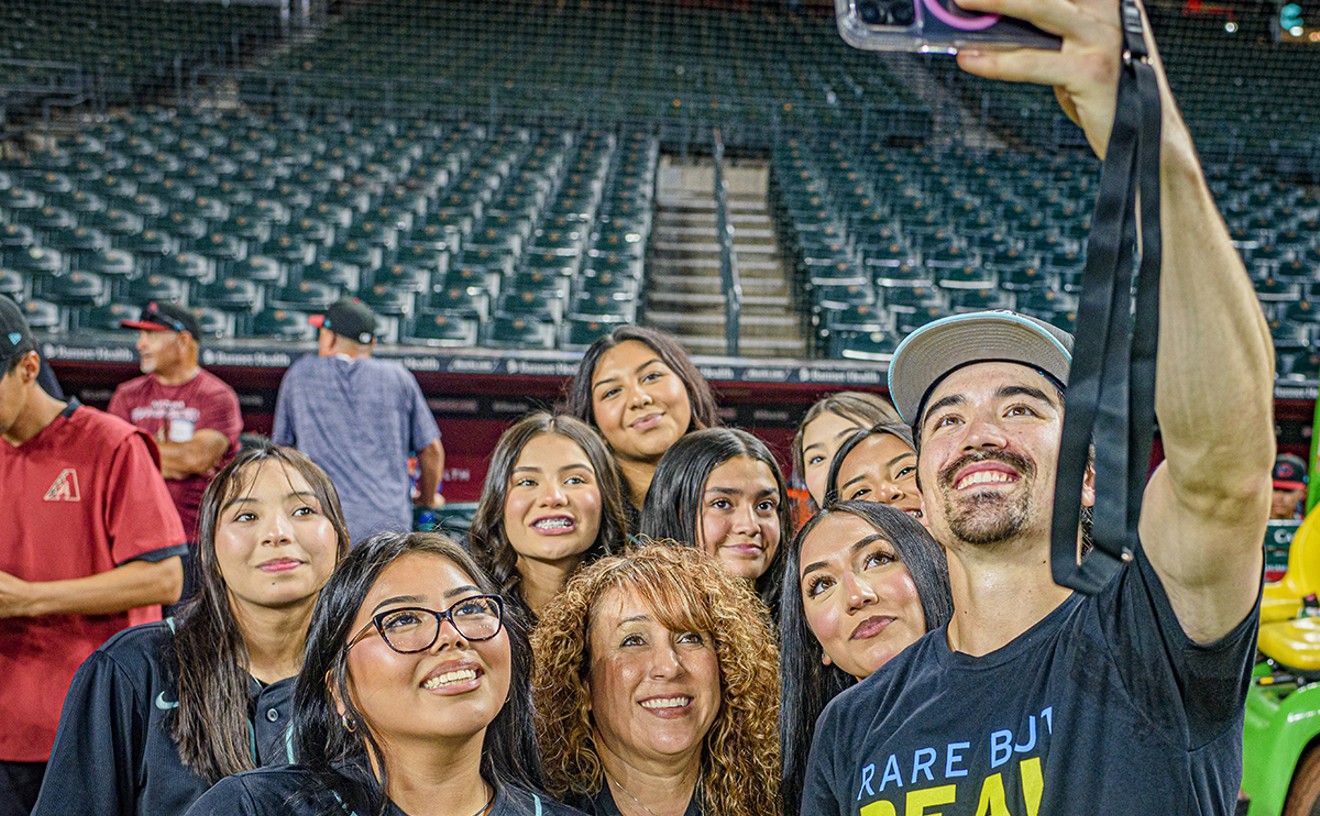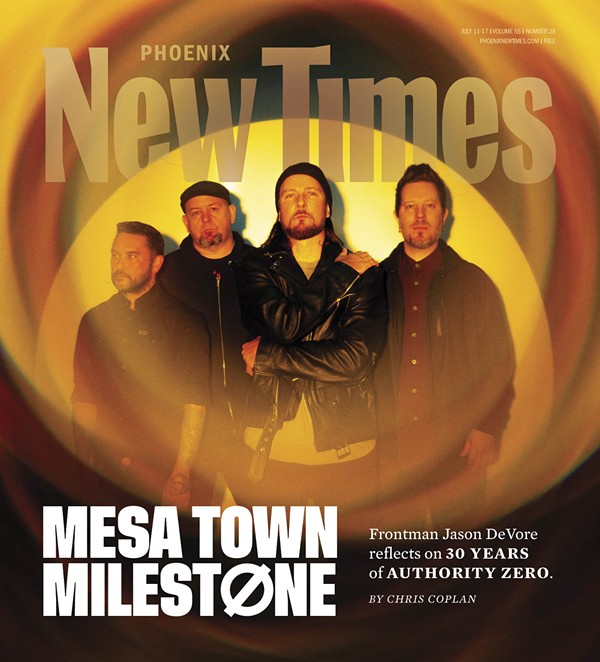The controversial Canyon Mine, which is located six miles south of the Grand Canyon, hasn’t even started uranium ore production yet. But its owners are already under fire for potentially contaminating a national forest and trucking hazardous materials through tribal lands.
Because of an unusually wet winter, the mine has filled up with water. Rather than store it all at holding ponds at the site, Energy Fuels has been transporting some of that water 300 miles to their uranium processing facility near Blanding, Utah.
Of those 300 miles, roughly 180 pass through tribal lands belonging to the Navajo Nation and the Ute Mountain Ute community. Activists say that the Navajo Nation was not formally notified that the water, which they worry could contaminate their drinking supply if there was a spill or an accident, would be traveling through their communities.
“This is another prime example of environmental racism, to allow unregulated transport of radioactive liquids in unmarked trucks through communities and without notifying the public or any of the surrounding indigenous nations,” says Leona Morgan, a community organizer with Haul No!, an indigenous-led initiative focused on fighting uranium transport.
“We have a right to know, at the very least, so proper preparations and emergency response are in place in case of a spill or accident.”
How dangerous is the contaminated water, exactly?
Well, a spokesman for Energy Fuels previously told the Arizona Daily Sun that the water being trucked through the Navajo Nation has three times the amount of dissolved uranium than is considered “safe” to drink. And in a November report to the Arizona Department of Environmental Quality, the company noted that the water contains 30 times the recommended level of arsenic.
But now Curtis Moore, vice president for marketing and corporate development at Energy Fuels, says that the water is not contaminated. "The excess water we are managing is relatively clean, and contains only trace amounts of natural uranium," he wrote in an e-mailed response.
"In fact, the water we are trucking offsite either meets – or comes very close to meeting – EPA drinking water standards for dissolved uranium."
What's coming next, though, presents an even bigger concern than potentially radioactive water. Energy Fuels has proposed transporting the uranium ore that’s extracted from the mine along the same route. That would mean that up to 30 tons of highly radioactive ore, covered only with thin tarps, could end up passing through the Navajo and Ute communities in a single day.
Those communities have dealt with the negative consequences of uranium mining for years, facing unusually high rates of cancer and kidney disease after being left with contaminated drinking water. In 2005, the Navajo Nation chose to ban uranium mining altogether, citing the considerable health risks.
But nothing prevents uranium from being transported on state roads that happen to pass through the Navajo Nation.
“The biggest concern is that if any of those trucks have a spill or an accident, it’s just adding insult to injury,” Morgan says. “We have all these mines that are still waiting to be cleaned up.”
She notes that when a nuclear waste plant opened in New Mexico, the state built a new road so that trucks hauling hazardous waste wouldn’t pass through Santa Fe.
“When it’s an affluent community, they build roads to go around it,” she says. “When it’s happening to indigenous people, people of color, it’s completely different.”
Morgan points out that roads that pass through the Navajo reservation are not always well-maintained. Often, they’re narrow, dotted with potholes, and have no shoulder. Animals from the open range lands periodically wander into the road. And when an accident does occur in a rural area, emergency response teams are not always readily accessible.
“If we can’t stop it, we’d like to see better protective measures paid for by the company, or by the state and federal government,” she says. “But the number-one thing would be to not allow hauling of ore or contaminated water. It’s really hard to say we want them to re-route it, because then it’s just going to go through another community.”
The very fact that the Canyon Mine exists is an insult to indigenous communities: It’s located four miles from Red Butte, a sacred site for the Havasupai tribe.
The tribe previously joined the Grand Canyon Trust, the Center for Biological Diversity, and the Sierra Club in a lawsuit that attempted to block construction of the mine, but was unsuccessful.
At an air quality hearing last fall, Carletta Tilousi, a member of the Havasupai tribal council, testified that mining had desecrated Red Butte.
“Our most sacred site, our most special sacred mountain, has been taken away from us and has been completely contaminated,” she said. “We can no longer go over there and do our ceremonies that we’ve done for many centuries. We can no longer pick the sage and the cedar and burn it.”
Making matters even worse, the Sierra Club says, Energy Fuels is now spraying some of the water from the mine into the air in an attempt to get it to evaporate. Photos captured by Sierra Club and Haul No! volunteers appear to show radioactive mist drifting into the Kaibab National Forest, which surrounds the mine.
“This is unacceptable and just confirms many of our concerns about this mine,” Alicyn Gitlin, the president of the Sierra Club’s Grand Canyon chapter, wrote in an statement.
“The mining industry has been saying that mining is cleaner and safer than it used to be, but now the shaft of the mine has been flooded and they had to develop a contingency plan before they’ve even started removing ore.”
Curtis Moore of Energy Fuels disputed the environmental group's claims.
"We are not blowing water into the forest, as the Sierra Club claims," he wrote in his e-mailed response.
"We have employed some commonly utilized enhanced evaporation machines that creates a mist over the pond to speed evaporation rates, which we shutdown during high-wind days to avoid the potential of the mist of this relatively clean water from crossing our fence-line."
The press release put out by the Grand Canyon chapter "is particularly egregious and full of falsehoods, even by the low standards of the Sierra Club," he added.
[
{
"name": "Air - MediumRectangle - Inline Content - Mobile Display Size",
"component": "18478561",
"insertPoint": "2",
"requiredCountToDisplay": "2",
"watchElement": ".fdn-content-body",
"astAdList": [
{
"adType": "rectangle",
"displayTargets": "mobile"
}
]
},{
"name": "Editor Picks",
"component": "16759093",
"insertPoint": "4",
"requiredCountToDisplay": "1",
"watchElement": ".fdn-content-body",
"astAdList": [
{
"adType": "rectangle",
"displayTargets": "desktop|tablet"
},{
"adType": "rectangle",
"displayTargets": "desktop|tablet|mobile"
}
]
},{
"name": "Inline Links",
"component": "17980324",
"insertPoint": "8th",
"startingPoint": 8,
"requiredCountToDisplay": "7",
"maxInsertions": 25
},{
"name": "Air - MediumRectangle - Combo - Inline Content",
"component": "16759092",
"insertPoint": "8th",
"startingPoint": 8,
"requiredCountToDisplay": "7",
"maxInsertions": 25,
"watchElement": ".fdn-content-body",
"astAdList": [
{
"adType": "rectangle",
"displayTargets": "desktop|tablet"
},{
"adType": "rectangle",
"displayTargets": "desktop|tablet|mobile"
}
]
},{
"name": "Inline Links",
"component": "17980324",
"insertPoint": "8th",
"startingPoint": 12,
"requiredCountToDisplay": "11",
"maxInsertions": 24
},{
"name": "Air - Leaderboard Tower - Combo - Inline Content",
"component": "16759094",
"insertPoint": "8th",
"startingPoint": 12,
"requiredCountToDisplay": "11",
"maxInsertions": 24,
"watchElement": ".fdn-content-body",
"astAdList": [
{
"adType": "leaderboardInlineContent",
"displayTargets": "desktop|tablet"
},{
"adType": "tower",
"displayTargets": "mobile"
}
]
}
]













